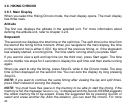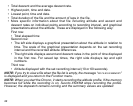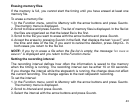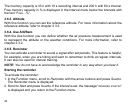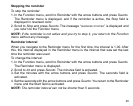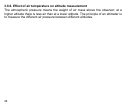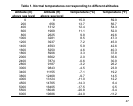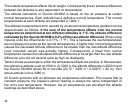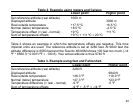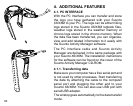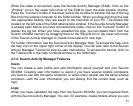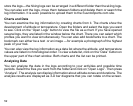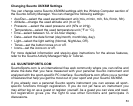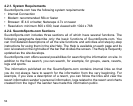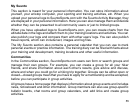48
The outside temperature affects the air weight. Consequently the air pressure difference
between two altitudes is also dependant on temperature.
The altitude calculation of Suunto X6/X6M is based on the air pressure at certain
normal temperatures. Each altitude has a definitive normal temperature. The normal
temperatures at each altitude are presented in Table 1.
The altitude measurement error caused by an abnormal temperature gradient can be
approximated as follows. If the sum of the temperature offsets from the normal
temperatures determined at two different altitudes is 1 ºC, the altitude difference
calculated by the Suunto X6/X6M is 0.2% off the real altitude difference (When using
imperial units the offset factor is 0.11% / 1 ºF). This is because the real temperatures
are not always the same as the normal temperatures. A higher than normal temperature
causes the calculated altitude difference to be smaller than the real altitude difference
(your mountain ascent was actually higher). Consequently, a lower than normal
temperature causes the calculated altitude difference to be larger than the real altitude
difference (you did not ascend quite as high as displayed).
Table 2 shows an example in which the temperature offsets are positive. In this example,
the reference altitude is set at 1000 m. At 3000 m the altitude difference is 2000 m and
the Suunto X6/X6M shows 80 m too little (20 ºC * 2000 m * 0.002/ºC = 80 m). Your
actual altitude is thus 3080 m.
All Suunto products with an altimeter are temperature-calibrated. This means that at
constant pressure, the pressure sensor reading is always the same independent of
the unit’s own temperature. However, the air temperature can still affect the altitude
readings as described above.



